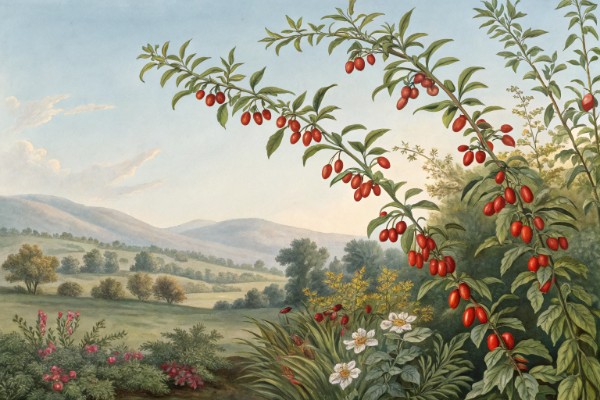Growing Potato Essentials for a Perfect Garden Harvest

Growing Potato
Growing potato starts with good soil, reliable seed potatoes, and plenty of sun. Choose seed potatoes the size of an egg, plant them about 4 inches deep, and give them at least 6 hours of daily sunshine—easy rules for growing potato that yields richly flavored, abundant harvests. Read on for pro planting methods, smart pest management, and clever storage tips that turn simple spuds into golden garden bounty.
Growing Potato essentials: timing, prep, and payoff
I plant when soil hits 45 to 50 F or 7 to 10 C at 4 inches depth and drains well after a rain. Cold mud equals sulking seed and patchy stands.
University of Maine Extension advises planting after soils warm and before hot spells arrive, which mirrors my best harvests by a mile. Early windows matter because potato is a cool-season crop that bulks before heat sets in.
Seed potatoes: source, size, and sprouting
Certified seed pays for itself, since it is inspected for viruses and seed-borne diseases that silently wreck yields. Supermarket spuds can carry late blight and scab, so I leave them on the plate, not in the ground.
I cut seed into 1.5 to 2 ounce or 40 to 55 gram chunks with 1 to 2 eyes, then dry the cuts 24 to 48 hours. A dusting of wood ash or garden sulfur keeps the cut face dry and less inviting to rot.
Chitting or pre-sprouting jump starts emergence by about a week for me. The Royal Horticultural Society recommends a bright, cool spot at roughly 45 to 55 F or 7 to 13 C until sturdy, stubby sprouts form.
Soil and bed building
Texture beats fertility on day one, so I loosen 8 to 10 inches or 20 to 25 cm and blend in finished compost. Heavy clay gets coarse sand and leaf mold, while pure sand gets peat-free compost and biochar.
Target pH 5.0 to 6.0 to discourage common scab. Fresh manure spikes scab risk and produces weird shapes, so I use composted inputs only.
For nutrients I side with low nitrogen and higher potassium. A preplant 5-10-10 at 2 to 3 pounds per 100 square feet or 1.0 to 1.5 kg per 10 square meters suits most soils, then I spoon-feed a bit more K at tuber set if a soil test asks for it.
Planting layout and depth
I trench 3 to 4 inches or 7 to 10 cm deep and space seed 10 to 12 inches or 25 to 30 cm in-row. Rows sit 30 to 36 inches or 75 to 90 cm apart to allow hilling access and airflow.
In raised beds I cheat the spacing tighter and prune foliage for air. Crowded leaves invite blight, so I keep the canopy open.
Hilling, mulching, and why greening happens
Hilling matters because new tubers form along buried stems. I pull 2 to 3 inches or 5 to 8 cm of soil up the plants every time they add 6 inches or 15 cm, stopping when hills reach 8 to 10 inches or 20 to 25 cm tall.
Exposed tubers turn green with bitter solanine. A loose mulch of clean straw at 4 to 6 inches or 10 to 15 cm stops light leaks and locks in moisture.
Irrigation rhythm that prevents hollow heart
Potatoes want a steady 1 to 1.5 inches or 25 to 38 mm of water weekly, especially during flowering and bulking. Long dry spells followed by a flood can crack centers, a defect called hollow heart.
Drip lines make life easy. Overhead watering late in the day has cost me foliage to disease more than once.
Containers, grow bags, and towers
In 15 to 20 gallon or 57 to 75 liter fabric pots I start with 4 inches or 10 cm of mix, set 3 seed, then top up as stems climb. Yields per pot run smaller than in-ground unless I am ruthless with water and feeding.
Stacked towers look clever, yet research-minded trials have shown no magic yield bump from extreme vertical layering. I stick to a single, breathable container with airy media and consistent moisture.
Variety short list by purpose
- Early salads: ‘Red Norland’, ‘Caribe’, ‘Annabelle’ for quick, tender skins.
- All-purpose golds: ‘Yukon Gold’ for flavor, ‘Colomba’ for uniform tubers in beds and bags.
- Bakers and fries: ‘Russet Norkotah’, ‘Goldrush’ for dry flesh and crisping.
- Color and curiosity: ‘Adirondack Blue’ and ‘Magic Molly’ with anthocyanins.
- Blight-tolerance focus: ‘Defender’, ‘Elba’, and ‘Sarpo Mira’ in humid regions.
- Storage champs: ‘Kennebec’ and ‘Red Pontiac’ that hold firm into spring.
I match days-to-maturity to my frost window. Short seasons reward earlies and midseason types that bulk before summer heat.
Rotation, spacing from tomatoes, and soil health
I rotate nightshades at least 3 to 4 years to starve pests and soil pathogens. Tomatoes and potatoes share late blight, so I set them apart and manage irrigation separately.
Cover crops before potatoes pay rent. A fall sowing of oats and peas tilled in spring gives fluff, slow nitrogen, and better tilth.
Pest playbook with organic and conventional options
Colorado potato beetle scouts early and learns fast, so I rotate chemistries if I spray and hand-pick eggs on Mondays. Spinosad and Bacillus thuringiensis var. tenebrionis work best on small larvae, while row cover blocks first flights entirely.
Wireworms chew tunnels in sandy soils; bait with carrot stakes to scout, then plant after a non-grass rotation. Predatory nematodes help, and harvest promptly at maturity to cut damage.
Aphids vector viruses, so certified seed and yellow sticky cards are my insurance. A hard water spray clears colonies before bloom.
Disease management that actually works
Late blight loves leaf wetness, cool nights, and dense canopies. I prune for airflow, water at soil level, and start protective copper or other labeled fungicides when regional alerts spike.
Early blight rides stress and low potassium. Mulch, sane irrigation, and a K-leaning feed program cut my leaf spot to nearly zero most years.
“Under conducive conditions, late blight can defoliate and destroy potato plantings in about a week.” Cornell University Plant Pathology, late blight fact sheets
Flowering, set, and the two harvest moments
New potatoes taste wild and sweet about 2 to 3 weeks after first bloom. I sneak a hand under the hill, take a few, and re-cover the roots.
For storage, I wait until vines yellow and die back, then leave tubers in soil 10 to 14 days for skin set. Dry skins store, tender skins bruise.
Curing and storage conditions that keep them firm
I cure at 50 to 60 F or 10 to 16 C with 85 to 95 percent humidity for 10 to 14 days in darkness. North Dakota State University and University of Idaho echo those targets for skin healing.
After curing, I store table potatoes at 38 to 40 F or 3 to 4 C with high humidity and zero light. Sprout inhibitors are unnecessary if temps stay cool and I cull any damaged tubers.
How much can a bed produce
Commercial yields hover around 20 to 50 metric tons per hectare across regions, according to FAO statistics. Home plots vary wildly, but consistent water, clean seed, and full sun raise the ceiling fast.
“Potato ranks among the world’s top staple crops by volume, feeding over a billion people daily.” Food and Agriculture Organization of the United Nations
Buying guide: seed, gear, and inputs I rely on
- Look for certified blue-tag seed, firm tubers, and size grades around 1.5 to 2.25 inches or 4 to 6 cm.
- Choose breathable fabric grow bags 10 to 20 gallons or 38 to 75 liters with stout handles.
- Use a scuffle hoe for between-row weeds, a trenching hoe for hills, and a harvest fork with blunt tines.
- Fertilizer: balanced, low N, chloride-free potassium if possible to avoid quality hits.
- Row cover rated 0.55 to 0.9 oz per square yard or 19 to 30 gsm for beetle exclusion and spring frost nights.
- Soil test every 2 to 3 years and adjust pH with sulfur rather than lime for this crop.
My field notes on Growing Potato, by stage
- Pre-plant: chit seed, prep trenches, install drip, pre-irrigate light if soil is dry.
- Emergence: rake in first hill, set sticky cards, scout beetles on warm afternoons.
- Budding: second hill, switch to steady moisture, consider a potassium sulfate side-dress at 0.5 pound K2O per 100 square feet or 250 g per 10 square meters if a soil test is low.
- Flowering: keep foliage dry, clear weeds fast, and hold water steady.
- Bulking: final hill, shade tubers with mulch, maintain 1 to 1.5 inches or 25 to 38 mm of water weekly.
- Senescence: stop watering 10 days before lift if soils are heavy, then harvest on a dry morning.
Quick fixes for common Growing Potato problems
- Green tubers: hill higher, add mulch, block light during storage.
- Scab: drop pH to 5.2 to 5.5, avoid fresh manure, water evenly during set.
- Hollow heart: smooth irrigation and avoid a heavy late nitrogen blast.
- Knobby or chain tubers: too-dry then too-wet cycles; tighten irrigation schedule.
- Black scurf and stem canker: start with certified seed, rotate out of potatoes three years, and avoid cold, wet soils at planting.
Crossovers with other crops that sharpen your Growing Potato game
Like onions, potato loves even water and hates sunbathing tubers, so mulching serves both. Like brassicas, it rewards big early root real estate and wins with a firm rotation plan.
And like tomatoes, the taste ceiling sits higher than the grocery bin. I have pulled a pan of olive-oil roasted ‘Elba’ that made me briefly forget steak existed.
Credible voices I track for potatoes
- RHS on pre-sprouting and home culture basics.
- Cornell and the USABlight network for disease forecasts and late blight management.
- University of Maine, Minnesota, and Idaho extensions for planting windows, fertility, and storage science.
- FAO and USDA reports for scale, yield, and global context.
I lean on these sources, then refine with local soil tests and a notebook. Plants tell the truth if I listen.
Cheatsheet: Potato Growing Musts for Bountiful Yields
🧤 Tools and Products You'll Need
- Spade or garden fork
- Certified seed potatoes
- Mulch, straw, or compost
- Measuring tape
- Watering can or hose
- Gloves
🌱 Soil & Site
- Full sun: 6+ hrs/day
- Loose, well-drained soil (pH 5.5–6.5)
- Enrich with compost before planting
- Rotate beds yearly; avoid repeat planting in same spot
🗓️ Timing & Prep
- Plant 2–4 weeks before last frost: Soil 45–50°F (7–10°C)
- Cut large seed potatoes into 2" (5 cm) chunks: 1–2 eyes each
- Let cut pieces dry 1–2 days
🚜 Planting Steps
- Dig trenches 6" (15 cm) deep; rows 30" (75 cm) apart
- Place seed pieces cut side down every 12" (30 cm)
- Cover with 4" (10 cm) soil; gently water
💦 Water, Feed, Hill
- Water evenly: 1–2" (2.5–5 cm) weekly
- Add compost at planting; side-dress at mid-growth
- Hill soil or mulch around stems when 6" (15 cm) tall; repeat 2–3x
🐞 Common Troubles
- Colorado potato beetle: Handpick or use neem
- Early/Late blight: Remove affected leaves, practice crop rotation
- Prevent scab: Maintain soil pH below 6.0
⏳ Harvest
- New potatoes: 2–3 weeks after flowering
- Main crop: Wait for vines to die (90–120 days)
- Gently lift tubers to avoid bruising
- Cure in dark, airy space for 2 weeks at 50–60°F (10–15°C)
🥔 Nutrition & Self-sufficiency
- Rich in potassium, vitamin B6, fiber
- 1 plant yields up to 10 tubers—max harvest from minimal space
- Great staple for home food security
Frequently Asked Questions about Growing Potato
What type of soil produces the healthiest potato harvest?
Potatoes thrive in well-drained, loose, loamy soil rich in organic matter. Ensure the soil's pH remains slightly acidic, ideally between 5.8 and 6.5, to stimulate vigorous potato growth and minimize common potato diseases.
At what temperature should potato planting begin?
Start planting potatoes when the soil temperature consistently reaches around 45°F (7°C). Cool but frost-free weather encourages sturdy potato sprouts and vigorous tuber formation.
How deep should potato seeds be planted?
Plant seed potatoes at a depth of approximately 4 inches (10 cm). This depth provides sufficient soil coverage to shield potatoes from sunlight exposure while promoting optimal root development.
How much sunlight do potatoes require each day?
Potatoes flourish when receiving full sunlight, which translates to at least 6 to 8 hours of direct sunlight daily. Adequate sun exposure boosts foliage vitality and enhances tuber size and quality.
What watering practice supports vigorous potato development?
Provide potatoes with consistent watering to maintain evenly moist soil conditions. Generally, supplying around 1 to 2 inches (2.5 to 5 cm) of water per week encourages healthy tuber formation. Adjust watering frequency based on rainfall and soil drainage to avoid waterlogging or drought stress.
When do potatoes reach maturity for harvesting?
Most potato varieties mature within 90 to 120 days after planting. Indicators such as yellowing plant foliage and drying stems signal readiness for harvesting. For early potatoes, harvest begins approximately 10 weeks after planting, while late-season varieties require up to 4 months.
How can potato pests be controlled naturally?
Implementing natural pest control strategies such as crop rotation, companion planting, and introducing beneficial insects effectively reduces potato pest populations. Planting marigolds or horseradish nearby discourages common potato pests, and handpicking pests early maintains healthy potato plants without chemical interventions.
What storage conditions keep harvested potatoes fresh longer?
Store harvested potatoes in a cool, dark, and well-ventilated space with temperatures around 40 to 50°F (4 to 10°C) and humidity levels between 85% and 95%. These conditions inhibit premature sprouting and decay, preserving freshness for several months.
Growing Potato rewards patience and a bit of grit. Give them rich, loose soil, steady moisture, and keep your eyes sharp for pests. Hill them up as they grow, and don’t rush the harvest—let the tops die back for that perfect, creamy texture. Rotate your crops to keep the soil healthy, and stash your haul somewhere cool and dark. If you’re itching to try more root crops, check out how to grow your own duck potato for a wild twist. In the end, growing potato is about working with the earth, watching for subtle signs, and enjoying the simple satisfaction of digging up your own dinner. That’s the good stuff.



